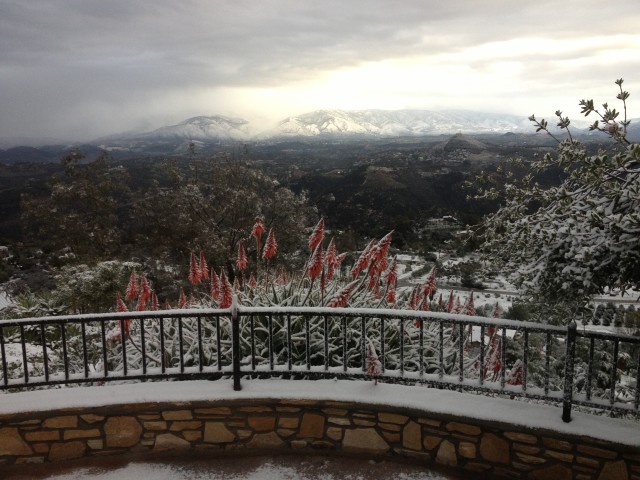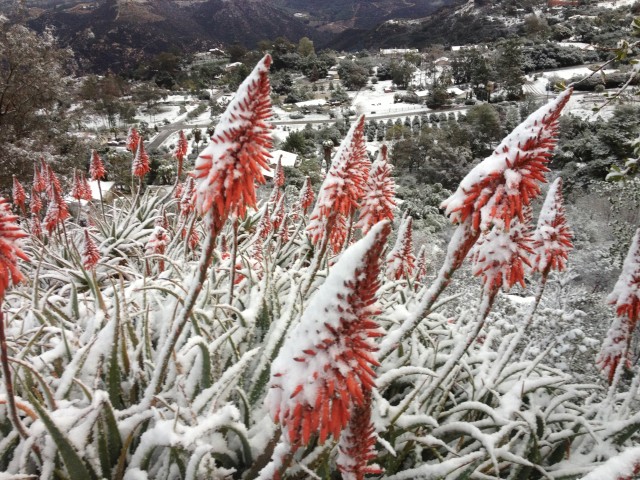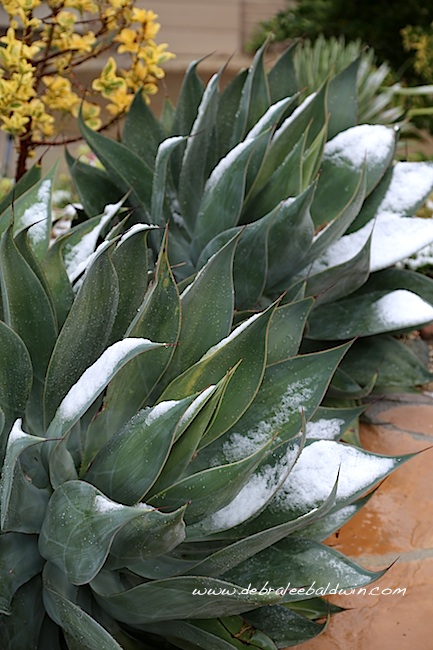
Every winter, as a child on an avocado ranch northeast of San Diego, I longed to see snow blanket the garden like a Currier & Ives painting. It never happened. Decades passed. My husband Jeff and I bought a home on a half acre in the same city, but at a higher elevation (1,500 feet). In 25 years, it didn’t snow. Then, on New Year’s Day, 2015, Jeff woke me and said, “You’ve got to see this. It’s our own personal wonderland.” I looked out the window, observed everything covered in white, and groaned, “There goes the garden.”
My comment reflected annoyance with a Colorado guy who was way too happy at this turn of events. Not that I was certain my frost-tender succulents would be damaged. I do know that snow is an insulator and that it might have prevented worse harm, had temperatures dropped below freezing. Normally I cover my plants with sheets when frost is predicted. But the forecast had been for rain. The perky weatherperson had said it might snow at lower elevations than usual, maybe even as low as 1,500 feet, to which I had said, “Yeah, right.”
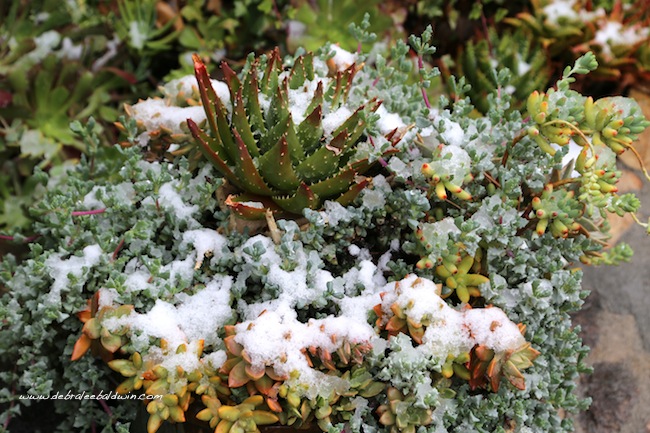
As luck would have it, lasting damage happened not to plants that in their native habitats never see snow, but to a soft-wooded tree. Snow weighed down an acacia’s leafy branches, and an 8-inch-diameter limb split from the trunk.
I figured we had six inches of snow, based on how much was atop cars parked along the street. Jeff laughed and said it was only two. I’m glad he woke me. What if I’d missed it? (I’d be even more annoyed with him!) As it was, most of it had melted by the time I threw on a coat and went outside, camera in hand.
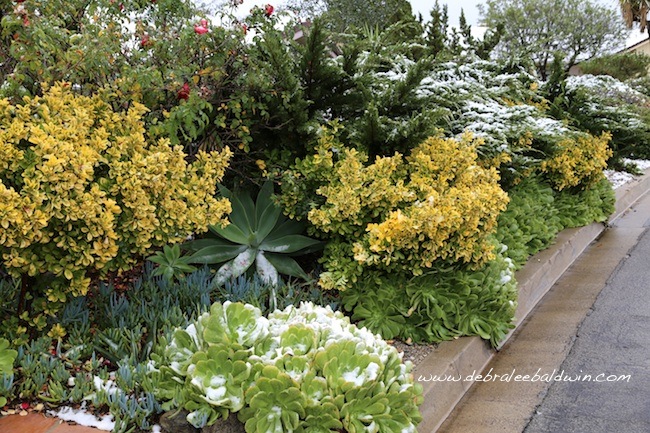
Snow on aeoniums.
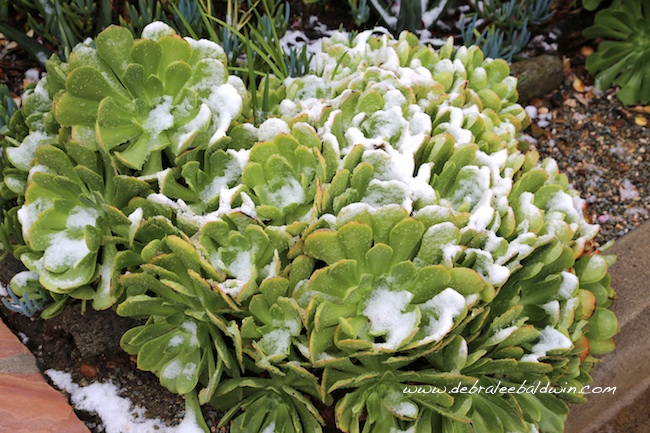
Snow-covered aloe in bloom.
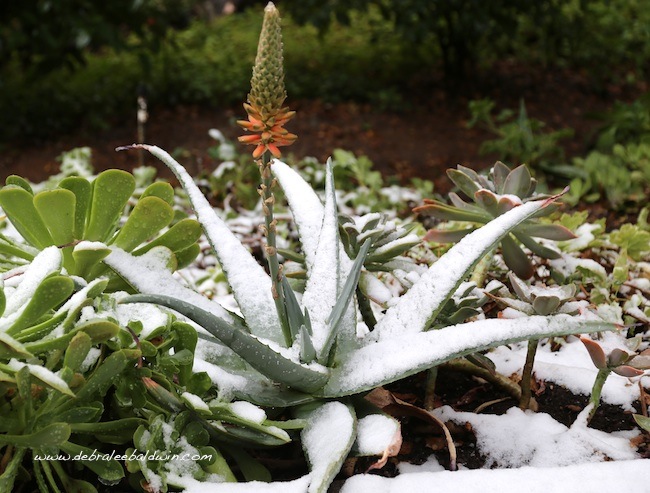
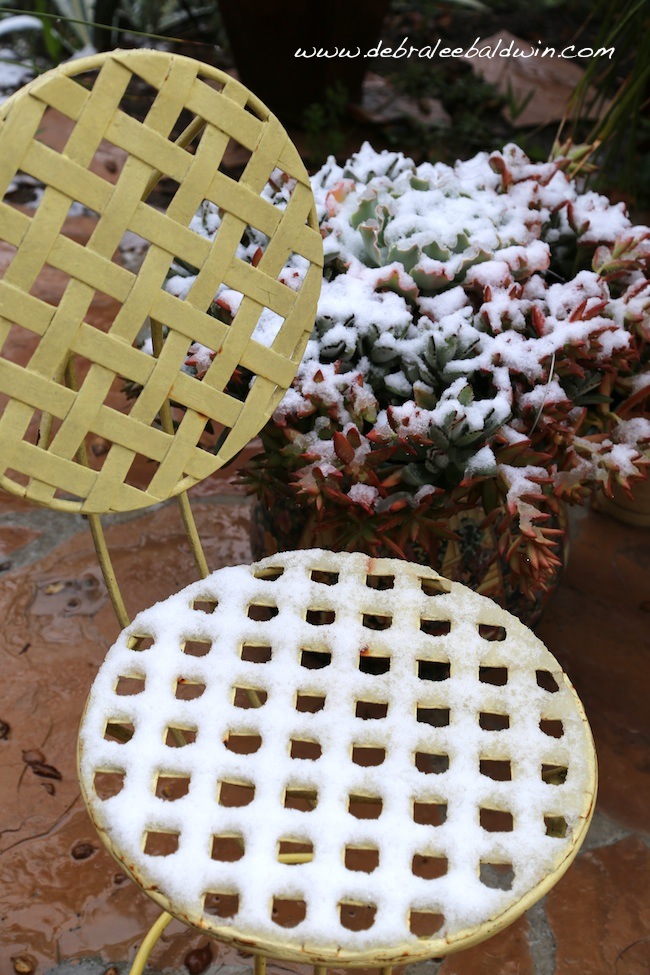
Snow on a ruffled echeveria hybrid.
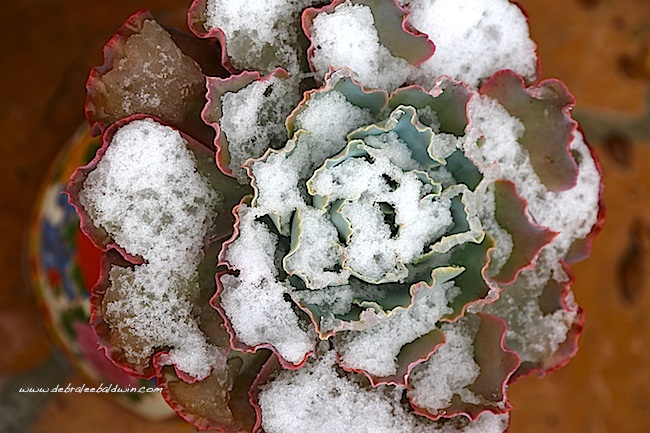
Have you also had a once-in-a-lifetime garden weather experience? I hope it was similarly harmless!
P.S. Linda Kennedy, who lives in my community, sent me these photos. She was up much earlier that morning. Needless to say, her home has a great view. If I didn’t know better (and if there were no aloes in the photo), I’d guess this was Montana.
